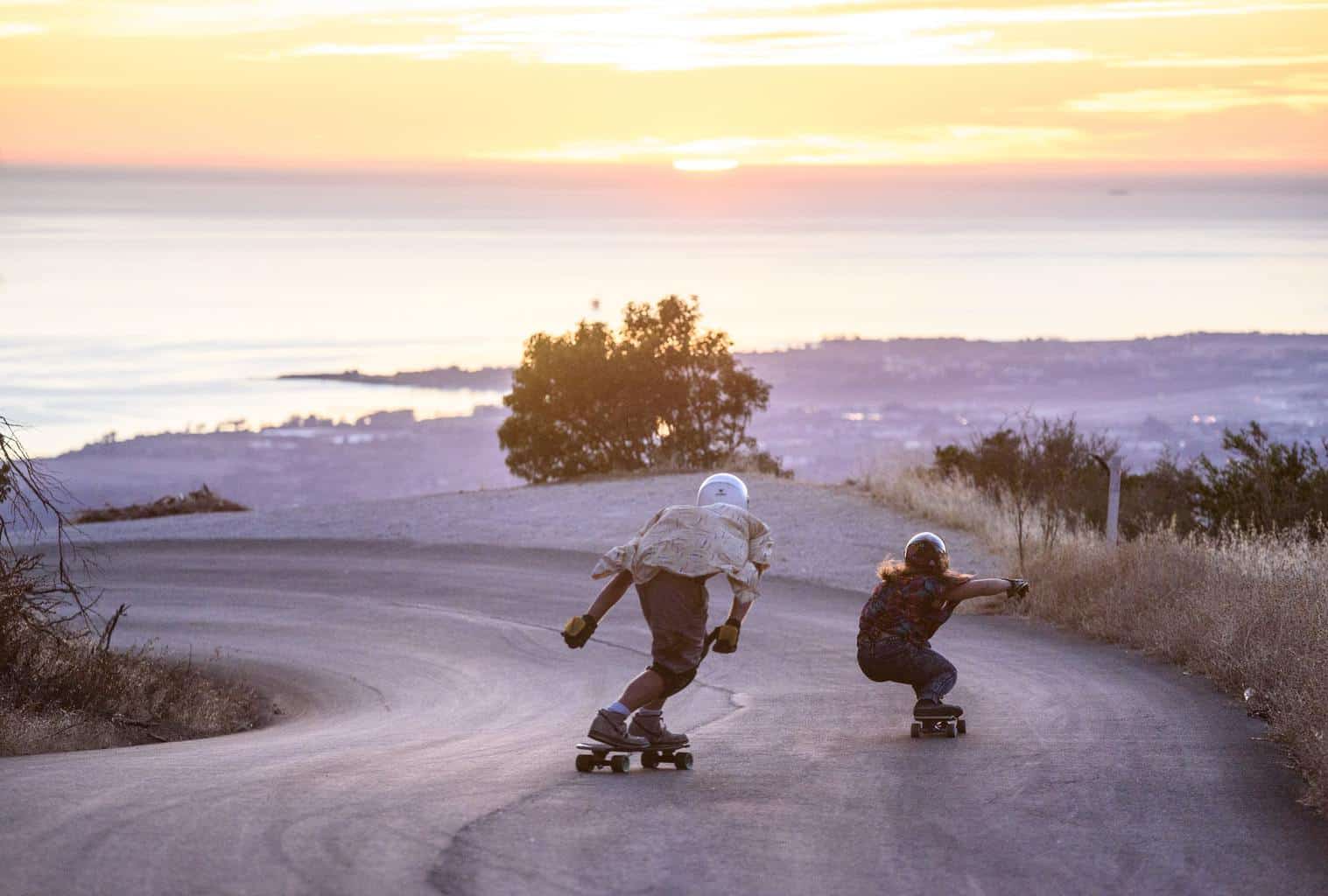If you are a surfer and hear the word “longboard” you likely think of a huge boat-like surfboard used to cruise along just about any surf imaginable.
However, there is another longboard, and it has wheels.
We know that surfing is similar to skateboarding in many ways, and doing one can help improve your skills in the other.
Skateboarding actually originated from surfing back in the 50’s.
These original skateboards were close replicas to surfboards, and are now known as longboards.
So if skateboarding is related to surfing, then what about longboards?
Keep reading to find out how longboarding is similar to surfing, and how one can complement the other.
- What Is a Longboard?
- How Is Longboarding Similar to Surfing?
- Does Longboarding Help With Surfing?
- What Is the Biggest Difference Between Surfing and Longboarding?
- Conclusion
- You Might Also Like…
What Is a Longboard?
To understand how longboarding is similar to surfing, let’s first identify the difference between a surfing longboard and a skateboarding longboard.
From there, we can see how trick skateboards differ from longboards.
Once you have a picture of this, the similarities of the two sports start to make more sense.
What Is a Surfing Longboard?
Concerning surfing, a longboard is the largest design of boards, although they still come in a variety of shapes and sizes, a few things are generally true.
Longboards are usually single finned, wide, and between 8 – 12 feet long.
These boards are perfect for all types of surf because they move quickly.
This makes it easier to get on a wave early and requires less balance. For this reason, they are perfect for new surfers.
That being said, a longboard is more difficult to maneuver because of its single fin and size.
What Is a Skateboarding Longboard?
Longboards are – as it says in their name – long. Their size and shape differ between designs but usually ranges between 2.5 and 5 feet.
These boards are generally used for cruising (just like surfing longboards), traveling, and bombing hills (downhill riding).
Because of their larger wheels, loose trucks, and low center of gravity, they allow for faster speeds and more control.
How Is a Trick Skateboard Different From a Longboard?
In essence, we could compare the difference between a trick surfboard and longboard to the difference of a shortboard for surfing and its longboard counterpart.
In both sports, a shortboard is usually used for performing quick movements, tricks, and aerials.
A skateboarding longboard is longer and wider than a trick board.
The wheels are larger which allows for less disruption from small pebbles, the trucks are looser for better turning and carving, and the board has a lower center of gravity for more control at higher speeds.
How Is Longboarding Similar to Surfing?
Of course, both longboarding and skateboarding are similar to surfing in many ways, and because of the same similarities that skateboarding has such as the following:
- The equipment used
- The culture involved
- The risks (mainly wiping out)
- Some of the techniques
You can read more on these topics while investigating the similarities between surfing and skateboarding.
That being said, surfing and longboarding have an even closer relationship with each other than surfing and skateboarding do.
So how exactly are surfing and longboarding similar?
Surf vs Longboarding Stance
When comparing the two standing positions, the stance is almost exactly the same.
In both sports, the rider stands side on with toes facing the long side of the board. Hips and head are turned to face the front.
The back foot is slightly turned out, while the front foot is at a 90° angle.
Like mentioned, the stance on both boards is almost the same.
One fundamental difference is that when surfing, the rider tends to be further to the back of the board, with one foot over the fins.
When longboarding, the body needs to be positioned in the center of the board, ideally with feet a shoulders width apart.
Although this seems different, the reason for the change in stance is to create the same effect when turning and carving with the board.
The Flow
Whether you are surfing, longboarding, or skateboarding, flow is fundamental to a smooth ride and gaining speed.
Both sports use subtle movements between the upper and lower body to create a smooth flowing action between the body, board, and road (or wave).
If you watch the video below, this movement will be perfectly demonstrated.
Pay attention to how the same hip and upper body movements are used both when on land and when surfing a wave:
Powersliding
Powersliding is a maneuver used in longboarding when the rider turns their hips to swing the board around so that it is traveling with the long side facing forward.
When this is done, the wheels stop turning and begin to skid. The friction from the ground causes the board and rider to quickly reduce speed.
This movement can also be used to change direction at the top of a slope or lip of a ramp.
Similarly, performing a bottom turn or cutback on a surfboard uses the same movement, and is done with the same goal in mind.
When doing a bottom turn (at the bottom of a wave) or cutback (on the lip of the wave) the surfer creates greater friction between the surfboard and water which allows them to slow down, turn, and get back to the white water or breaking section of the wave.
Does Longboarding Help With Surfing?
In short, yes, longboarding without a doubt will help with your surfing, and in turn, surfing will help with your longboarding.
Because there are so many transferable skills between the two, spending time longboarding can give you an edge when next hitting the water.
So how does one help with the other?
Balance
Both sports require a strong center of gravity and good balance.
Being able to adjust your body position while leaning and turning is a fundamental of both longboarding and surfing.
Because there are not always waves to surf, longboarding can help you keep your balancing skills up to date when you are out of the water.
Longboarding will help you better understand your center of gravity, where to position your feet, and how to move around on an unsteady surface without falling over.
Carving
Carving on a surfboard and carving on a longboard is just about identical. With both, carving allows you to change the line and direction that you are traveling.
When surfing, putting your weight on the rail will change your direction. Longboards work exactly the same.
These two are so similar that you can buy specific trucks for your longboard (called surfing trucks) which allow the movements of the longboard to replicate your movements in the water.
These trucks are very flexible and allow you to “pump” for speed as you would on a surfboard, instead of pushing with your legs for speed.
Managing Speed
Have you ever heard of a speed wobble?
If not, you are bound to experience it at some time, whether you are surfing in the ocean or bombing a hill on a longboard.
A speed wobble occurs when you are traveling too fast for your board and / or own capabilities:
For one, the bigger the board, the less the wobble, but this does not mean that you are lost when it comes to surfing on a shortboard.
Because some longboards are made for speeding down steep hills, they are perfect practice for managing how you react at high speeds.
Although it might be a lot more painful when wiping out on the tarmac, the opportunity for a long ride and the ability to repeat the same run over and over again will help you understand how to position your body while increasing your speed.
Being able to properly control your speed out of the water will make each ride easier in the water.
This is important, especially because if you fall, you need to paddle all the way out again and wait for the next wave.
Other Ways Longboarding Can Help Surfing
Although the above-mentioned points are the most relatable to longboarding and surfing, they are not the only benefits that you can find from doing either.
The following are true for skateboarding, surfing, and longboarding:
Increase specific strength
Standing on any of these boards requires specific muscle strength. The more you engage each of these muscle groups, the stronger they will become.
Consistency
We cannot always find time to hit the waves, and sometimes we have the time but not the waves.
Being able to practice similar techniques out of the water simply allows you more time to get it right.
Practicing tricks
Because surfing is inconsistent, it is sometimes difficult to master new tricks.
Wave sizes differ, they don’t break in the same way, and sometimes you will have to wait 15 minutes or more for the next set to roll in.
Even professional surfers spend time skateboarding to master new tricks and styles.
The consistency of the land allows you to work on specific problems when learning something new.
What Is the Biggest Difference Between Surfing and Longboarding?
This one may seem a bit obvious, but it is worth covering, as you may not have thought of a few of the differences.
Firstly, and most obviously, surfing is done in the water while longboarding is done on land.
Because of the nature of surfing, you are required to paddle out to the back of the waves, paddle onto the wave, and popup.
These are all done before the similarities between the two sports take place.
It is because of these extra movements that surfing becomes a lot harder than longboarding.
Another fundamental difference is the material used for the boards.
Of course, surfing does not use wheels, but the boards are also made differently.
Longboards are traditionally made from a flexible wood, which allows them to be controlled on solid surfaces.
On the flipside, surfboards are made from fiberglass or solid wood. This allows them to float and be controlled on a non-solid surface.
Lastly, one of the biggest differences is your footing on the board. We have mentioned this before.
When surfing, your feet tend to be at the back of the board, while longboarding requires your center of gravity to be in the middle of the board.
Conclusion
Surfing is very similar to longboarding. This is because it was surfers who made the first skateboards.
Because of their surfing background, the skateboards closely represented what we now call longboards.
They were made to “surf” on days when there were no waves and therefore have fundamental similarities.
If you longboard you will without a doubt find some of the skills transfer to your surfing, and if you already surf, you will find longboarding much easier.
“Sidewalk surfing” is a cornerstone of the surf culture, and to properly understand surfing as an extreme sport you need to try bombing full speed down a hill on a longboard.
You Might Also Like…
-

Do Surfers Ride Switchfoot? 5 Benefits (& Why You Should Learn It)
-

Do Surfers Shave Their Legs? 5 Common Reasons (+Pros & Cons)
-

Do Surfers Wear Helmets? 8 Situations You Should Wear One (+4 Cons)
-

Do Surfers Poop in the Ocean? Myths & Facts (+5 Tips)
-
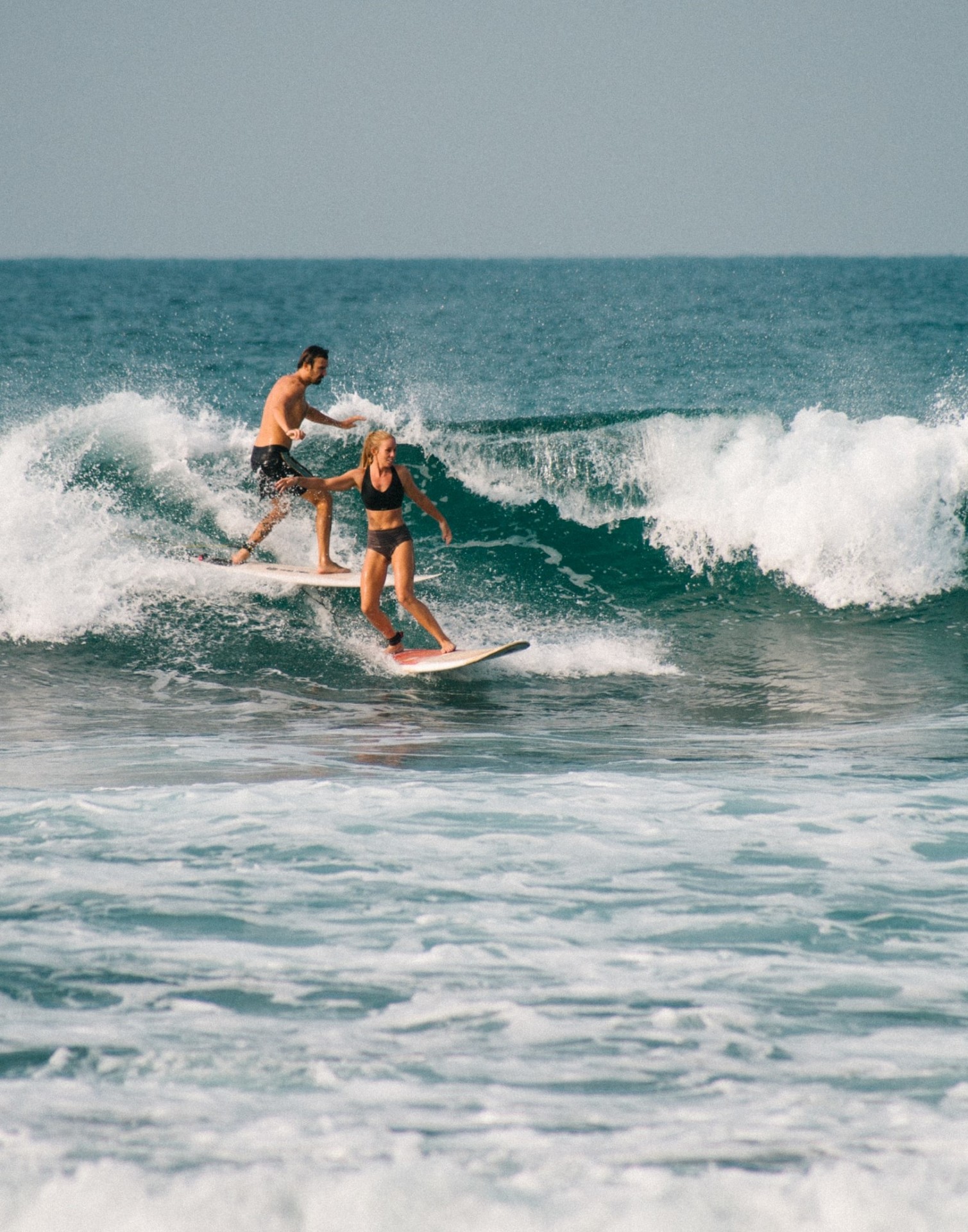
Do Surfers Run Into Each Other? 5 Common Reasons (+8 Tips)
-
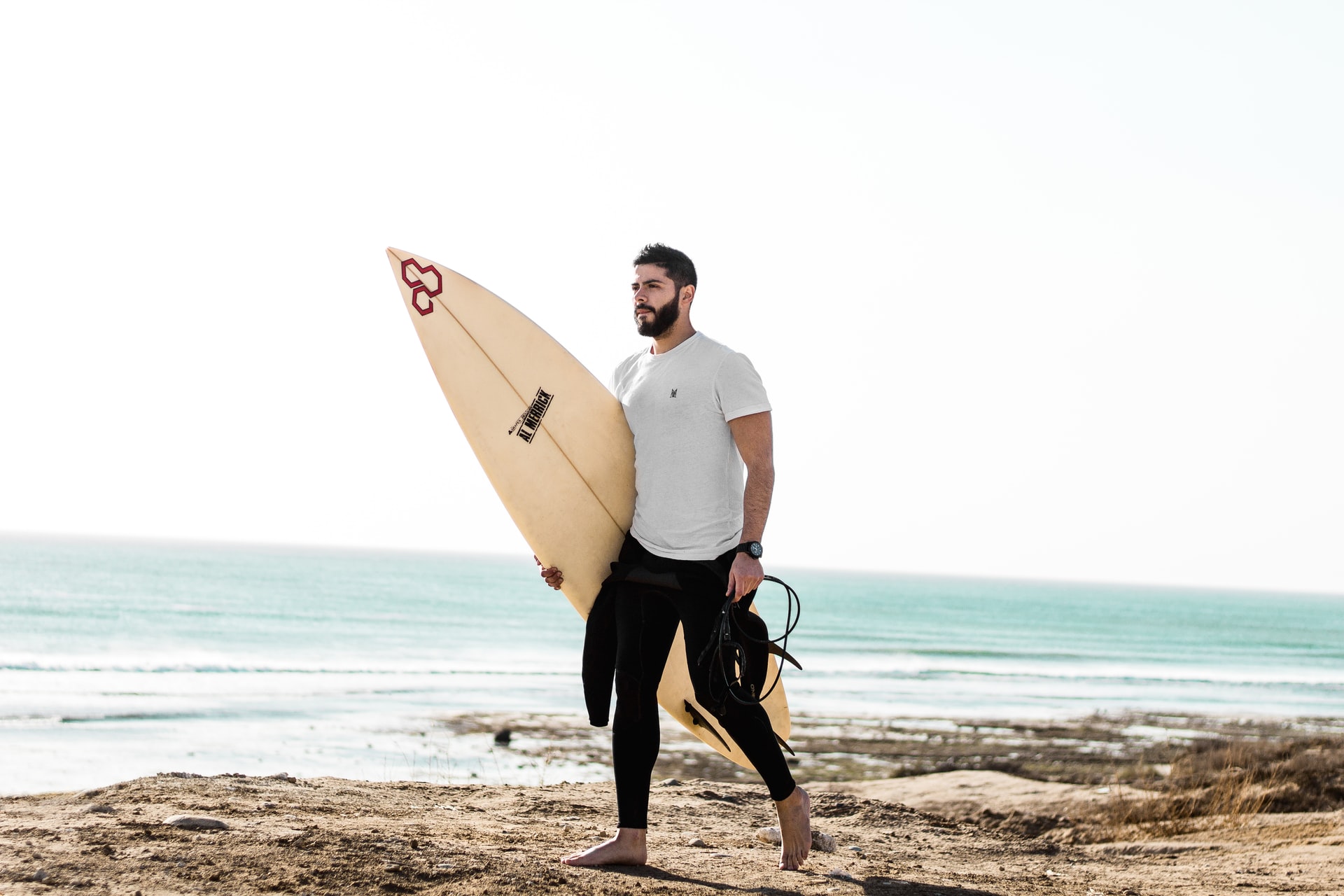
Do Surfers Have Beards? Pros & Cons You Should Know (+4 Tips)
-
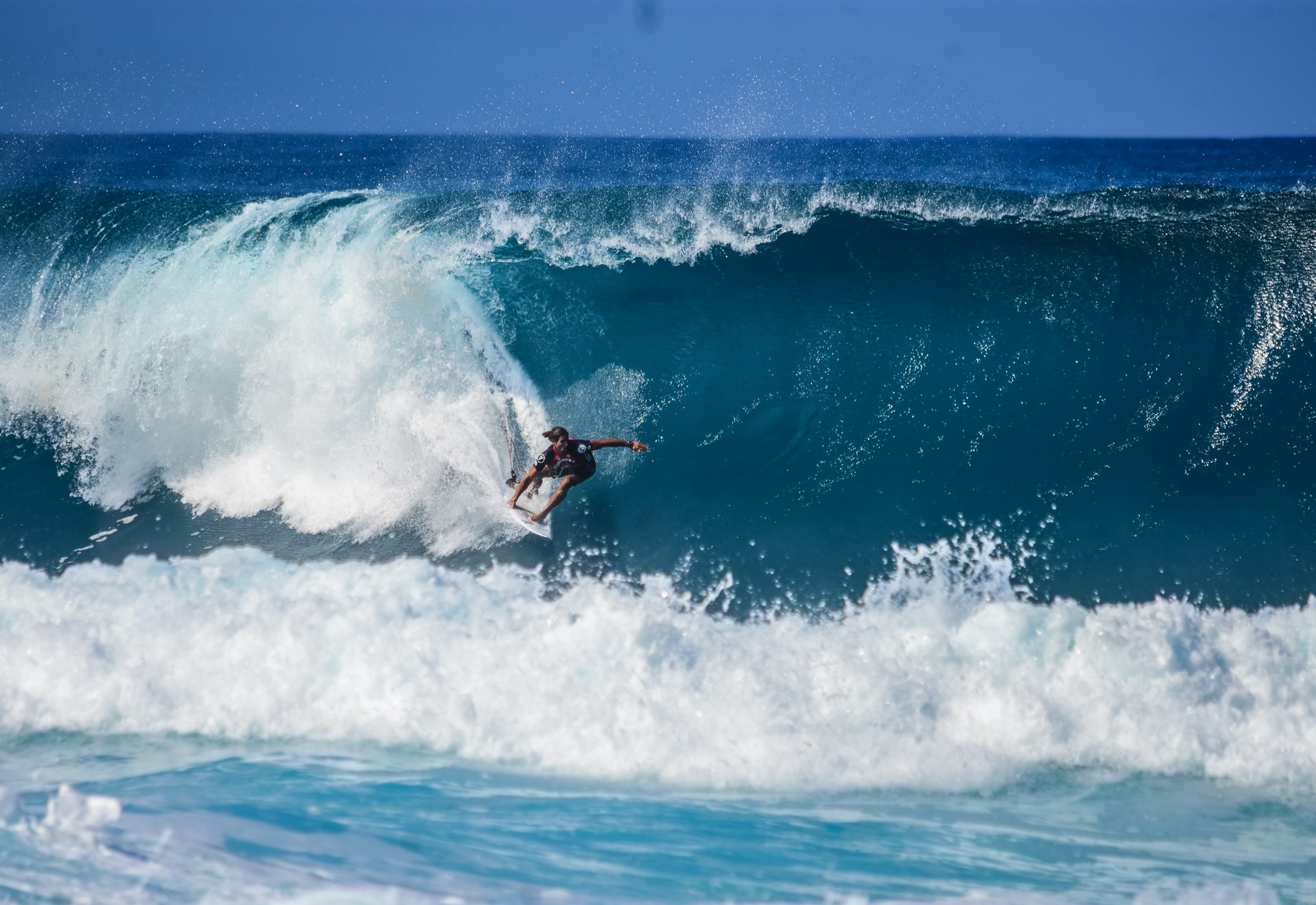
Do Surfers Like Constructive or Destructive Waves? (+Pros & Cons)
-

How to Surf Safely: 34 Crucial Tips (Every Surfer Should Know)
-
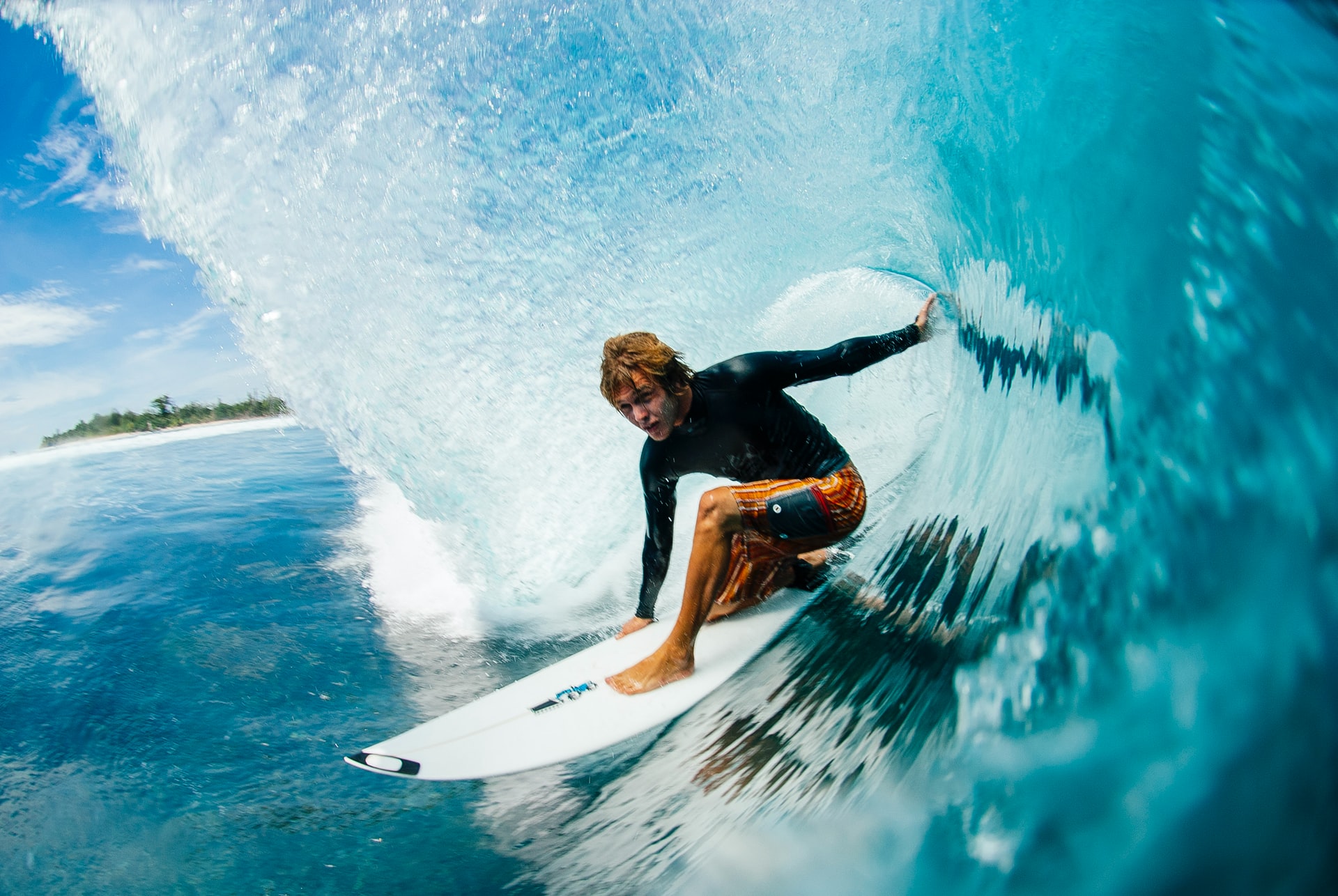
Do Pro Surfers Use Leashes? (+6 Reasons Why You Should Too)
-

Do Many Surfers Drown? Here Are the Facts (+4 Common Reasons)
-
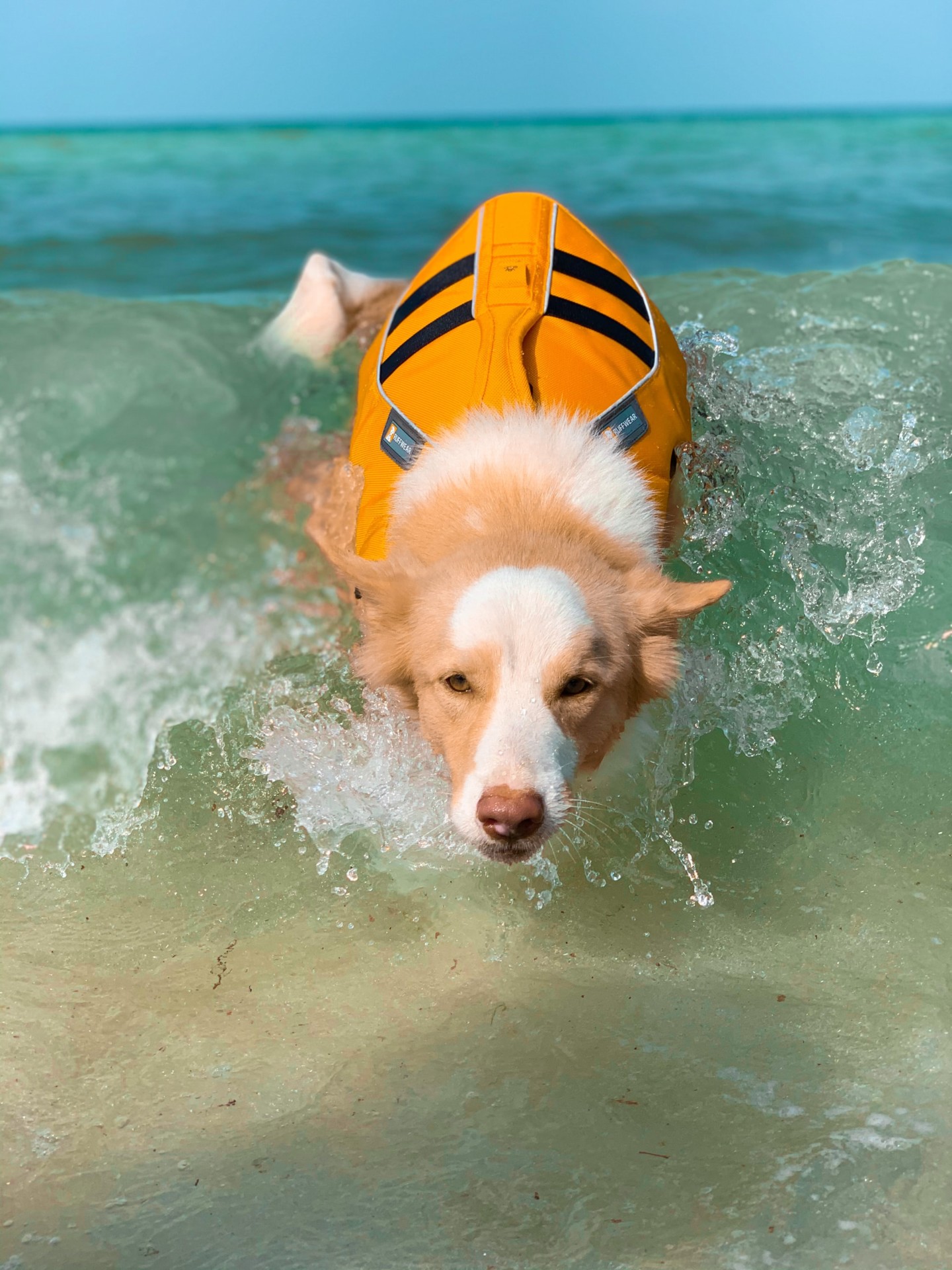
Do Surfers Wear Life Jackets? (7 Reasons Why They Don’t)
-
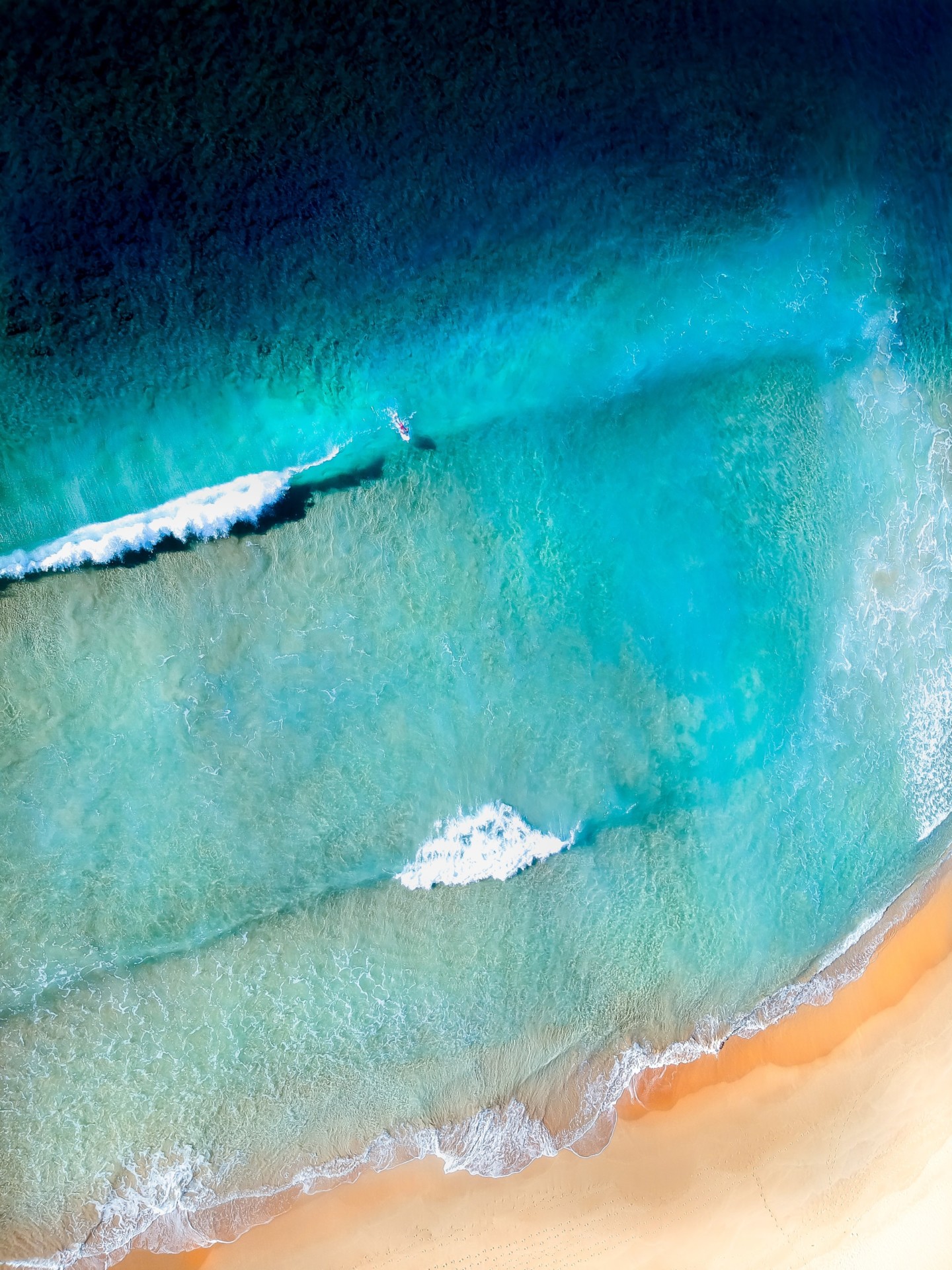
Do Surfers Like Rip Currents? (& How to Use Them Safely)

